
views
Using Baking Soda and Vinegar

Pour 1 cup (240 mL) of baking soda into the clogged toilet. Measure out the baking soda with a measuring cup or scoop and dump it into the toilet bowl. Let it sink to the bottom of the sitting water and settle. Baking soda has lots of household cleaning uses, so it’s a good item to keep on hand from your local supermarket!

Add 1 gallon (3.8 L) of boiling water and see if the toilet unclogs. Boil the water in a kettle and carefully pour it into the toilet bowl. Don’t do this if the water level is already high in the toilet bowl. The heat and pressure of the water can help unclog the toilet faster. If you hear a suction sound and see the water draining out, then gravity and the hot water were enough to unclog the toilet. Give it a flush to see if it works as it should.
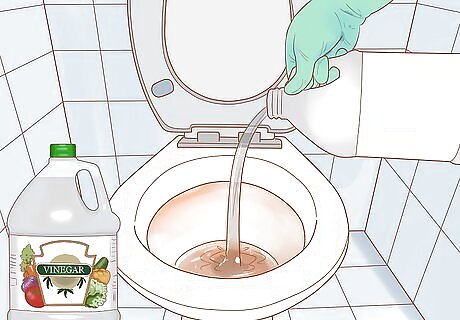
Pour 2 cups (470 mL) of white vinegar into the toilet if it is still clogged. Pour very carefully, and pay close attention to the reaction between the vinegar and baking soda so that it doesn’t fizz over the toilet bowl. Stop pouring and wait for the fizzing to subside if it gets too high, then continue pouring until all the vinegar is in the toilet bowl. The “volcanic” reaction between the baking soda and vinegar is what unclogs the toilet, but be very careful not to let it erupt all over your bathroom floor!
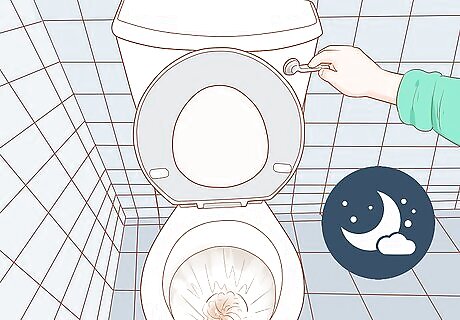
Let the mixture sit for at least 2 hours, or overnight until the water drains. Check on the toilet after 2 hours have passed, and try flushing it if the sitting water has drained. If it looks like it is still clogged, let the mixture sit overnight before you flush it. Repeat this process if the toilet does not unclog the first time.
Unclogging Tougher Clogs

Plunge the toilet 2 hours after adding the baking soda, water, and vinegar. Place the plunger over the hole in the toilet bowl and give it a few good plunges. When you hear a suction noise and see the water level lowering, then flush the toilet. If it still doesn’t unclog with a plunger, let the mixture sit overnight and try again. Repeat the process as needed until it unclogs.

Use a plumbing snake if the toilet remains clogged. Place the head of the plumbing snake in the toilet bowl with the coiled tip in the hole. Slowly turn the handle clockwise to insert the snake’s coil towards the clog until you feel resistance, then turn it counterclockwise to bring the snake back, and try to flush the toilet. If the toilet doesn’t flush right away, repeat the process until the clog is loosened and you can flush the toilet normally. Use a plumbing snake designed for toilets, called an auger. It’s important to use an auger because they have a special rubber coating so that they won’t damage the porcelain on your toilet.
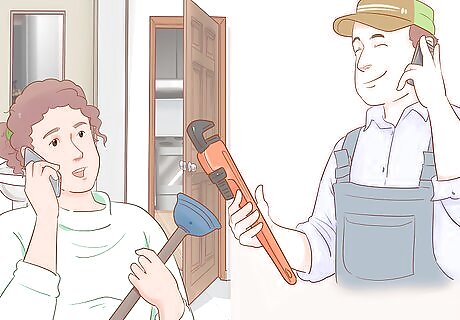
Call a professional if you cannot unclog the toilet. Sometimes clogs are too bad to fix on your own. Find a local plumber online or in the phonebook and set an appointment with them to come unclog your toilet. If it’s an emergency, there are 24-hour plumbers that can come unclog your toilet any time of day.
Preventing Future Toilet Clogs
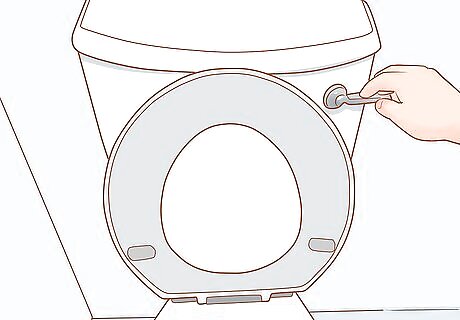
Flush the toilet twice after you use it to clear waste and toilet paper better. Some toilets can only handle a limited amount of waste and toilet paper with each flush. Flush once, wait for the toilet to finish draining, then flush it again. You can also give the toilet a flush before you use it to make sure it is all the way clear.
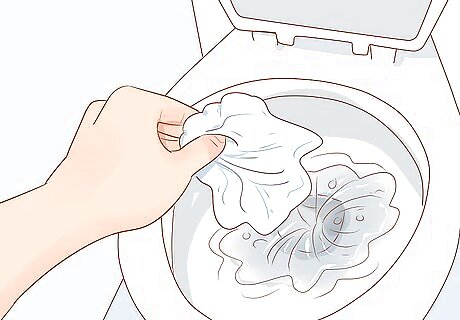
Don’t flush anything but human waste and toilet paper. Toilet plumbing is not designed to handle anything else. Put things like wet wipes, cotton swabs, dental floss, and feminine hygiene products in the garbage. It might look like everything you put in the toilet is getting flushed away, but many items that commonly get put in the toilet just end up staying in the pipes and causing bigger plumbing problems in the future.
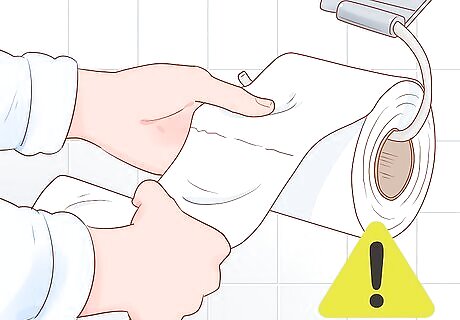
Don’t use excessive amounts of toilet paper. Most toilet clogs come from people trying to flush down too much toilet paper at once. Use only what you need, and use thinner varieties of toilet paper if your toilet is prone to clogs. Super-soft deluxe varieties of toilet paper are more likely to clog your toilet because they don’t break down easily.




















Comments
0 comment